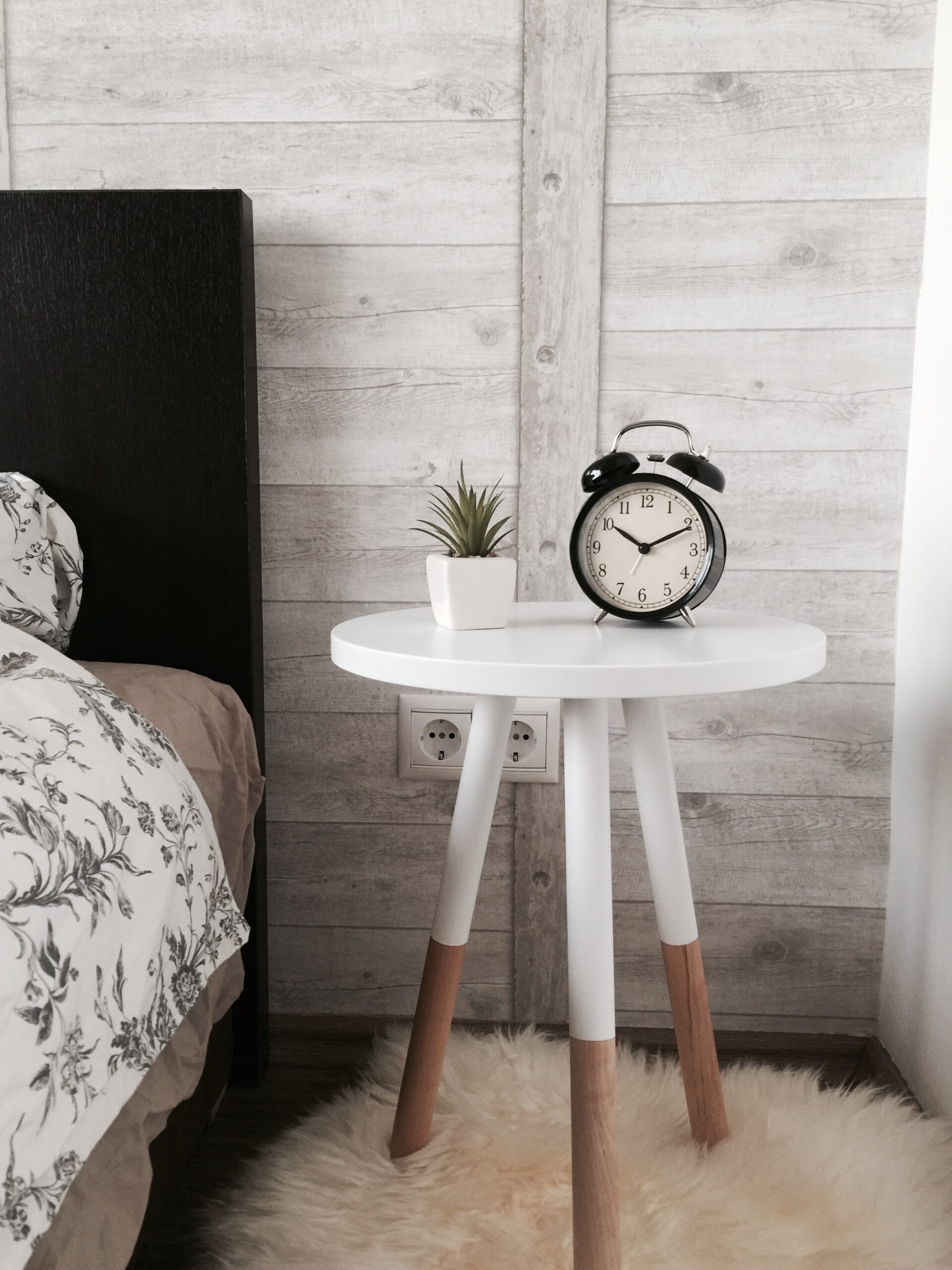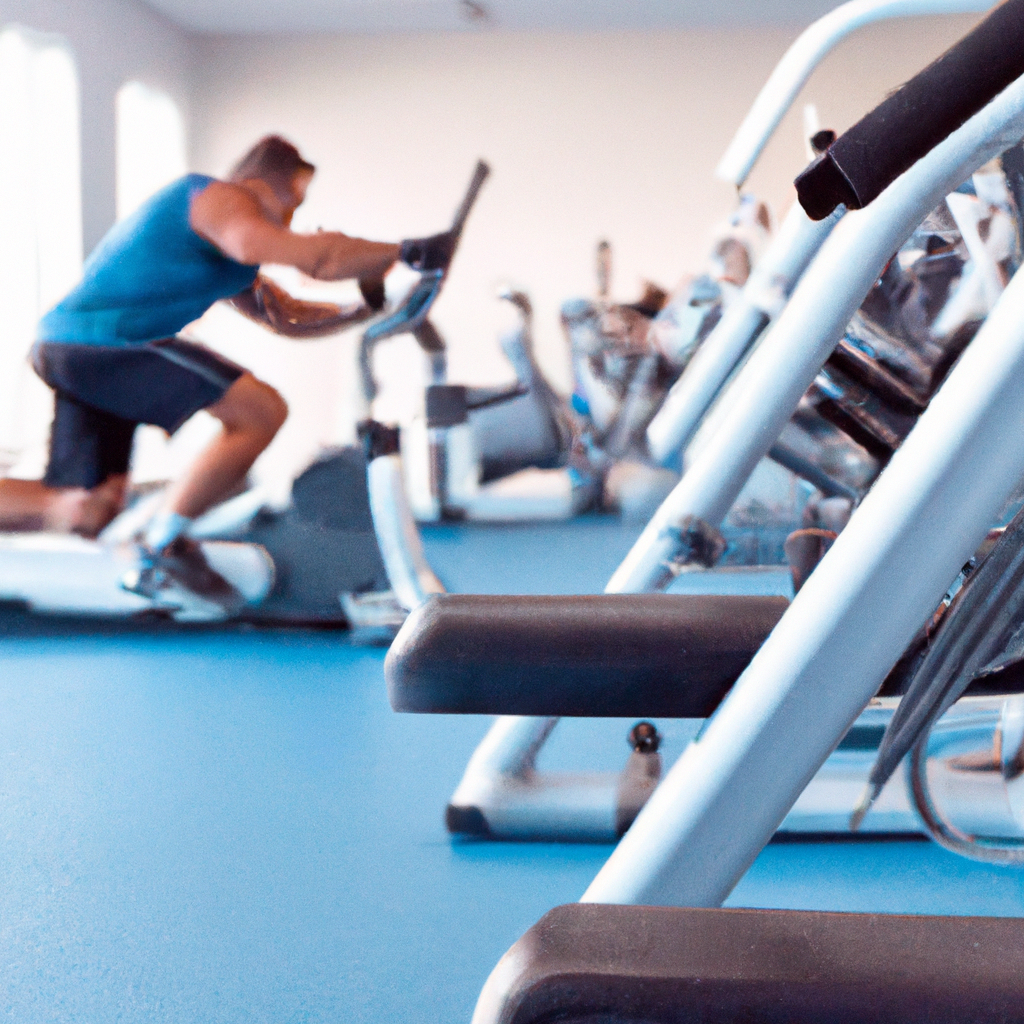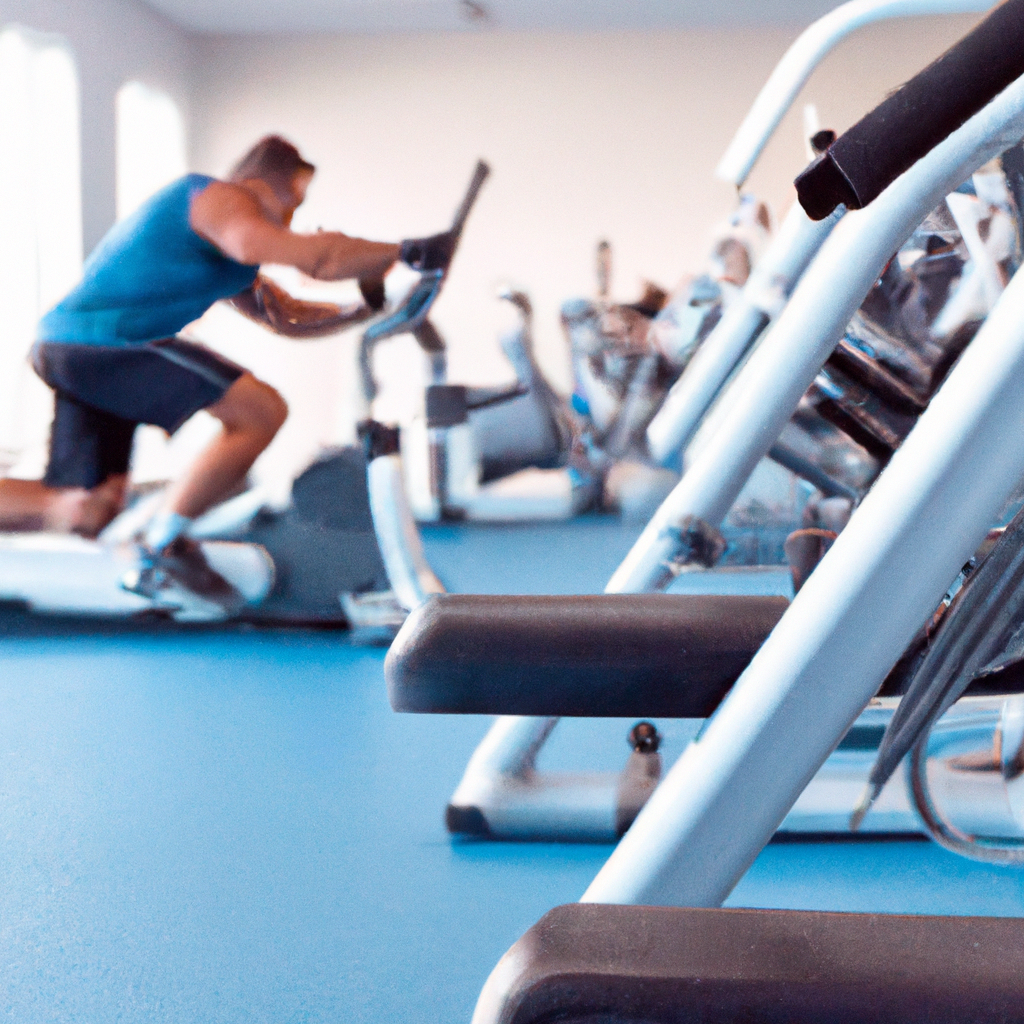So, you’ve been hitting the gym regularly, sweating it out on the machines and pushing yourself to new fitness heights. But lately, circumstances have changed and you find yourself needing to shift your workout routine from the gym to the comfort of your own home. Don’t worry, this transition doesn’t have to be overwhelming or complicated. In fact, with a few simple adjustments and a dash of creativity, you can successfully bring the gym experience to your living room. In this article, we will share some practical tips and advice on how to seamlessly transition from the gym to home workouts, so you can continue your fitness journey without missing a beat.
Understanding the Difference between Gym and Home Workouts
In order to successfully transition from the gym to home workouts, it is important to understand the pros and cons of each. Gym workouts offer a wide range of equipment, professional guidance, and a motivating atmosphere. On the other hand, home workouts provide convenience, privacy, and the ability to customize your exercise space. By recognizing the benefits and limitations of both options, you can make an informed decision about which workout environment is best for you.
Importance of knowing the pros and cons of both gym and home workouts
Knowing the pros and cons of both gym and home workouts is essential to make a confident transition. By understanding the advantages of each, you can leverage them to maximize your workout experience. Likewise, being aware of the limitations allows you to find alternatives and workarounds. This knowledge will help you stay motivated, adapt your routines, and make the most of your fitness journey.

This image is property of images.unsplash.com.
Adapting to the change in environment and workout style
Transitioning from the gym to home workouts requires adapting to a new environment and workout style. At the gym, you have access to a wide range of equipment and machines, as well as the guidance of trainers and fitness professionals. At home, you may have limited equipment options and rely more on bodyweight exercises. It is important to embrace the change and find creative alternatives to replicate your gym workouts in a home setting. Embracing this new workout style can bring excitement and variety to your fitness routine.
Creating Your Home Workout Space
Finding the best location in your house When creating your home workout space, it is important to choose a location that suits your needs. Consider a place that is quiet, well-ventilated, and away from distractions. If possible, choose a room with enough natural light, as it can boost your mood and energy levels during workouts. Some people prefer the garage, while others find a spare bedroom or basement to be the perfect spot. Ultimately, the space you choose should inspire and motivate you to exercise.
Ideal space conditions for workout In addition to choosing the best location, it is important to optimize the space conditions for your home workouts. Ensure that the space is clean, clutter-free, and well-organized. Clear the area of any obstacles or tripping hazards to ensure your safety during exercise. Consider investing in mirrors to check your form and posture. Pay attention to lighting and temperature as well, as these factors can greatly impact your overall workout experience.
Arranging the space for maximum workout efficiency Once you have chosen the location and optimized the conditions, it’s time to arrange your home workout space for maximum efficiency. Determine where to place your fitness equipment, ensuring easy accessibility and organization. Consider the layout of the space and arrange the equipment in a way that allows for a smooth flow during your workouts. Additionally, you may want to incorporate storage solutions to keep your exercise equipment neatly stored when not in use.

This image is property of images.unsplash.com.
Acquiring Essential Home Workout Equipment
Identifying what fitness equipment to buy Investing in the right home workout equipment is crucial for an effective fitness routine. Consider your specific fitness goals and the exercises you enjoy doing. Basic equipment such as dumbbells, resistance bands, and an exercise mat are versatile and suitable for a wide range of exercises. If you have more space and budget, you can consider purchasing larger equipment like a treadmill or stationary bike. Make a list of the essential equipment you need and prioritize based on your fitness preferences and goals.
Budgeting for your home workout equipment Before purchasing home workout equipment, it’s important to establish a budget. Determine how much you are willing to spend and then research the prices of the equipment you need. Consider both new and used options, as well as local stores or online marketplaces. Take your time to compare prices, read reviews, and choose equipment that is within your budget without compromising quality and durability.
How to choose the right gear When choosing home workout equipment, quality and functionality should be your top priorities. Look for well-reviewed brands and products known for their durability and performance. Consider the type of exercises you will be doing and choose gear that supports those movements. Seek out options with adjustable features to accommodate different fitness levels and goals. Additionally, if possible, try out equipment before purchasing to ensure it suits your preferences and needs.
Adapting Your Workout Routine for Home
Transforming gym exercises to home-friendly exercises Adapting your workout routine from the gym to home requires transforming gym exercises into home-friendly exercises. Without access to specialized machines and equipment, it is important to find alternative exercises that target the same muscle groups. For example, if you used to perform bench presses at the gym, you can switch to push-ups or dumbbell chest presses at home. Get creative and explore different variations and modifications that can be done with minimal or no equipment.
Creating a balanced home workout routine When transitioning to home workouts, it is important to create a balanced routine that targets all major muscle groups and incorporates cardio and flexibility exercises. Design a plan that includes strength training, such as bodyweight exercises or resistance band workouts, as well as cardiovascular activities like high-intensity interval training (HIIT) or jumping rope. Remember to include rest days in your routine to allow for proper recovery and avoid overtraining.

This image is property of images.unsplash.com.
Safety Precautions during Home Workouts
Setting up safe workout spaces Safety should always be a top priority, even in the comfort of your own home. When setting up your home workout space, ensure there is enough room to move freely and perform exercises without any risk of injury. Remove any hazards such as loose rugs or furniture that may obstruct your movements. Additionally, ensure that the flooring is suitable for exercise, with adequate cushioning or shock absorption to minimize the impact on your joints.
Avoiding common home workout injuries Home workouts come with their own set of potential risks and injuries. To avoid common injuries, it is crucial to maintain proper form and technique during exercises. Take the time to learn the correct posture and movement patterns for each exercise to minimize the risk of strain or sprain. Start with lighter weights or resistance and gradually increase as your strength builds. Listen to your body and rest when necessary, rather than pushing through pain or discomfort.
Maintaining Motivation and Discipline
Setting your personal goals Maintaining motivation and discipline is key to a successful home workout routine. Start by setting clear and realistic fitness goals that align with your overall objectives. Whether you aim to lose weight, gain strength, or improve flexibility, having specific goals will give you direction and purpose. Write down your goals and keep them visible to remind yourself of what you are working towards.
Creating a consistent workout schedule Consistency is crucial in achieving your fitness goals. Establish a regular workout schedule that suits your lifestyle and preferences. Identify the best time of day for your workouts and stick to it. Treat your workout appointments as non-negotiables and prioritize them just like any other important commitment. By creating a routine and sticking to it, you will develop a sense of discipline and make exercise an integral part of your daily life.
Keeping track of your progress Keeping track of your progress is essential for staying motivated and measuring your success. Set up a system to record your workouts, such as a workout journal or a fitness tracking app. Track your exercise duration, intensity, and any improvements you notice over time. Celebrate small achievements along the way, as they are milestones towards your larger fitness goals. Looking back at how far you’ve come can be a powerful motivator to keep pushing forward.

Utilizing Online Resources for Home Workouts
Finding reliable online workout guides Online resources are abundant when it comes to home workouts. However, it is important to choose reliable sources that provide accurate and trustworthy information. Look for reputable fitness websites, YouTube channels, or fitness influencers who specialize in home workouts. Read reviews and gather recommendations from reliable sources to ensure the workouts you follow are safe and effective.
Participating in virtual workout classes Virtual workout classes have gained popularity and provide a sense of community and motivation during home workouts. Many fitness studios and trainers offer live or pre-recorded classes that you can join from the comfort of your own home. These classes provide structure, guidance, and the opportunity to connect with others who are also working towards their fitness goals. Explore different options and find classes that align with your interests and fitness level.
Nutrition Guidance for Home Workouts
Maintaining a healthy diet for home workouts Maintaining a healthy diet is crucial when engaging in home workouts. Focus on consuming a balanced diet that includes lean proteins, fruits, vegetables, whole grains, and healthy fats. Stay hydrated by drinking enough water throughout the day. Avoid excessive consumption of processed foods, sugary snacks, and sugary drinks, as they can negatively impact your energy levels and overall health.
Pre and post workout meals at home Fueling your body properly before and after workouts is important for optimal performance and recovery. Prior to your workout, aim for a balanced meal that includes carbohydrates for energy, such as whole grain toast or fruit, and a source of lean protein, such as eggs or Greek yogurt. After your workout, consume a meal or snack that combines carbohydrates and protein to replenish glycogen stores and aid in muscle recovery. Examples include a protein shake, a chicken and vegetable stir-fry, or a smoothie with protein powder.

Addressing Common Challenges in Transitioning to Home Workouts
Overcoming mental barriers Transitioning from the gym to home workouts can bring about mental barriers, such as lack of motivation or the feeling of being less accountable. To overcome these challenges, remind yourself of the benefits of home workouts, such as convenience and privacy. Set realistic expectations and focus on the positive aspects of working out at home. Find ways to stay motivated, such as listening to uplifting music or working out with a friend virtually.
Addressing physical challenges in the transition Physical challenges in the transition to home workouts can include limited equipment options, space constraints, or the need to modify exercises due to lack of specialized machines. Embrace these challenges as opportunities to get creative and try new exercises. Use everyday objects around the house as makeshift workout equipment, such as water bottles as weights or a step stool as a bench. Modify exercises by adjusting the range of motion or intensity to accommodate your available resources.
Dealing with limited resources or space If you are faced with limited resources or space for your home workouts, remember that even small changes can make a big difference. Look for bodyweight exercises that require no equipment, such as lunges, squats, or push-ups. Utilize resistance bands for added challenge and versatility. If space is a constraint, focus on exercises that do not require much room to perform, such as planks or mountain climbers. Compact workout equipment like adjustable dumbbells can also be a great solution for limited space.
Measuring the Effectiveness of Your Home Workout
Keeping track of your workout results To measure the effectiveness of your home workouts, it is important to keep track of your workout results. Record important metrics such as the number of repetitions, weights used, or the duration of your workouts. Take note of how you feel during and after each workout, as well as any improvements in strength, endurance, or flexibility. By tracking your progress, you can identify areas of improvement and make necessary adjustments to your workout plan.
Making necessary adjustments to your workout plan Regularly assessing and adjusting your workout plan is crucial for continued progress. As you gain strength and improve fitness, you may need to increase the intensity or resistance of your exercises. Incorporate new exercises or variations to keep your workouts challenging and engaging. Additionally, if you encounter any physical limitations or injuries, modify your workouts accordingly to ensure safety and avoid further harm.
Celebrating your home workout achievements Lastly, celebrate your home workout achievements along the way. Acknowledge your hard work and effort, no matter how small or big the achievement may be. Treat yourself to small rewards or incentives to stay motivated and maintain a positive mindset. Sharing your progress with friends or on social media can also boost your confidence and inspire others on their fitness journeys. Remember, every step forward is a step closer to reaching your fitness goals.
In conclusion, transitioning from the gym to home workouts requires careful planning, adaptability, and a positive mindset. Understanding the pros and cons of both gym and home workouts is crucial for making an informed decision. By creating an ideal home workout space, acquiring essential equipment, adapting your workout routine, prioritizing safety, maintaining motivation, utilizing online resources, focusing on nutrition, addressing common challenges, measuring effectiveness, and celebrating achievements, you can successfully embrace the transition and thrive in your home workout journey.

